Colorful Utopia - Magical Realism
- OGP

- Oct 14, 2022
- 6 min read
Updated: Dec 22, 2022
By OGP Reporters / Members Contribute File Photos, Naohisa Inoue's Works
Oh Good Party
"Surrealism is most distanced from magical realism the aspects that it explores are associated not with material reality but with the imagination and the mind, and in particular it attempts to express the 'inner life' and psychology of humans through art". It seeks to express the sub-conscious, unconscious, the repressed and inexpressible. Magical realism, on the other hand, rarely presents the extraordinary in the form of a dream or a psychological experience. " Bowers, Maggie Ann (2004). Magic(al) Realism.
As described by Japanese artist Naohisa Inoue, "It could have been a beautiful sun set, or an extraordinary tree, anything can open your personal door to Iblard. Or perhaps there is a place you have always dreamed of, a place that doesn’t exist in this world, but which would have been great fun if it DID exist. Anything your heart desires can be seen in Iblard and everyone opens there own door to this eternal land. When you see something that pleases your eye, that is YOUR entrance to Iblard whether it be a precious stone, pretty clouds, or a beautiful field.. Thus Iblard can in some ways become a mirror reflection of our hearts desires, the landscape in Iblard can change according to our desires, the trains in Iblard move according to where we want to go."
The artists of magical realism were always able to interact with the world through their imagination - man and nature coexisting in complete harmony, without the need for technology or industrial production.
Naohisa Inoue's exquisite brushstrokes and colorful paintings depict not only the fantasies of our childhood, but also the expression of magical realism - a fantastical, wonderful and magical utopian world that is created by reconstructing the real world - Iblard.
Naohisa Inoue often talks about a new way of looking at the world, a way of "seeing through the eyes of Iblard". Japan's giant skyscrapers, millions of train lines, buildings covered with ivy and surrounded by beautiful woods or gardens. The real world will have similarities to Iblard, it just depends on how you look at it.
Magical realism is a genre of literary fiction. The line between fantasy and reality is frequently blurred as it presents a realistic view of the world with the addition of magical elements. In fiction and theatrical productions, magical realism typically refers to literature, particularly magical or paranormal phenomena presented in a real-world or secular context. Magical realism is frequently regarded as a distinct genre from fantasy fiction despite the use of some magical elements because it employs a great deal of realistic detail and uses magical elements to represent reality, whereas fantasy fiction frequently has a disconnect from reality. In comparison to realist literature or fantasy, magical realism is frequently seen as a blending of real and magical elements.
Because both surrealism and magical realism focus on illogical or unrealistic facets of human nature and existence, they are frequently confused with one another. The term "magical realism," coined by German art critic Franz Roh to describe an uncommon form of realism primarily used by American painters, has a long-standing relationship to surrealism and consequently had an impact on Alejo Carpentier's magical reality.
Important distinctions do, however, still exist. Surrealism "is most distanced from magical realism the aspects that it explores are associated not with material reality but with the imagination and the mind, and in particular it attempts to express the 'inner life' and psychology of humans through art". It seeks to express the sub-conscious, unconscious, the repressed and inexpressible. Magical realism, on the other hand, rarely presents the extraordinary in the form of a dream or a psychological experience. " To do so," Bowers writes, "takes the magic of recognizable material reality and places it into the little understood world of the imagination. The ordinariness of magical realism's magic relies on its accepted and unquestioned position in tangible and material reality. (Bowers, Maggie Ann (2004). Magic(al) Realism. New York: Routledge)
Paul Westheim, in 1922. "Ein neuer Naturalismus?? Eine Rundfrage des Kunstblatts." (Das Kunstblatt) wrote, "In the new art, he saw a right, a left wing. One, conservative towards Classicism, taking roots in timelessness, wanting to sanctify again the healthy, physically plastic in pure drawing after nature...after so much eccentricity and chaos... The other, the left, glaringly contemporary, far less artistically faithful, rather born of the negation of art, seeking to expose the chaos, the true face of our time, with an addiction to primitive fact-finding and nervous baring of the self... There is nothing left but to affirm it, especially since it seems strong enough to raise new artistic willpower."
Italian Giorgio de Chirico, producing works in the late 1910s under the style arte metafisica (or Metaphysical art), is seen as a precursor and as having an "influence...greater than any other painter on the artists of New Objectivity." In the 1940s and 1950s, American painters were later coined magical realists; a link between these artists and the Neue Sachlichkeit of the 1920s was explicitly made in the New York Museum of Modern Art exhibition, tellingly titled "American Realists and Magic Realists."
Franz Roh applied the term magic realism to visual art, he was designating a style of visual art that brings extreme realism to the depiction of mundane subject matter, revealing an "interior" mystery, rather than imposing external, overtly magical features onto this everyday reality. Roh explains in 1925 essay was "Post-Expressionism, Magical Realism", "We are offered a new style that is thoroughly of this world that celebrates the mundane. This new world of objects is still alien to the current idea of Realism. It employs various techniques that endow all things with a deeper meaning and reveal mysteries that always threaten the secure tranquility of simple and ingenuous things.... it is a question of representing before our eyes, in an intuitive way, the fact, the interior figure, of the exterior world."
According to Franz Roh, magical realism instead faithfully depicts the exterior of an object, and in doing so, the spirit, or magic, of the object reveals itself. Its aim is not to add a magical element to realist painting, but to pursue a thoroughly faithful rendering of reality, and the "magical" effect on the viewer derives from the intensity of this effort.
The term "magic realism" in mid-20th century visual art tends to refer to work that incorporates overtly fantastic elements, somewhat in the manner of its literary counterpart. Occupying an intermediate place in this line of development, the work of several European and American painters whose most important work dates from the 1930s through to the 1950s, including Bettina Shaw-Lawrence, Paul Cadmus, Ivan Albright, Philip Evergood, George Tooker, Ricco, even Andrew Wyeth, such as in his well-known work Christina's World, is designated as "magic realist". This work departs sharply from Roh's definition, in that it" is anchored in everyday reality, but has overtones of fantasy or wonder".
In Paul Cadmus's work, for example, the surreal atmosphere is sometimes achieved through stylized distortion or exaggeration that does not correspond to reality. The "magical realism" of modern art has gone beyond the merely fantastic or surreal to depict a frankly magical reality with an increasingly tenuous foothold in "everyday reality. Artists associated with this magical realism include Gregory Gillespie, Peter Doig, Richard T. Scott, and Will Teaser, among others, and would incorporate traditional realism with less surreal and fantastical connotations.
Postscript
We learned about Naohisa Inoue through the recommendation of a senior collector at OGP, and were immediately enthralled by his exquisite creations. The "Ibaradou" series by Naohisa Inoue, a fantasy artist who was influenced by the Surrealist and Impressionist movements, is notable for its brilliant use of colour and exquisite attention to painting detail. And the work's core principle, or the artistic expression of intent, is strong with magical realism. The works of Naohisa Inoue are definitely worth seeing if you are interested in this.
Note
* Naohisa Inoue, born in 1948 is a fantasy illustrator and painter influenced by both the Surrealism and Impressionism movements. He is currently a professor at Seian University of Art and Design. He is best known for Iblard, an original fantasy world that has spawned a video game, manga, picture books, textbooks, a short animated film and an appearance in Whisper of the Heart. His also painted a mural at the Ghibli Museum, which can be found at the central lobby.





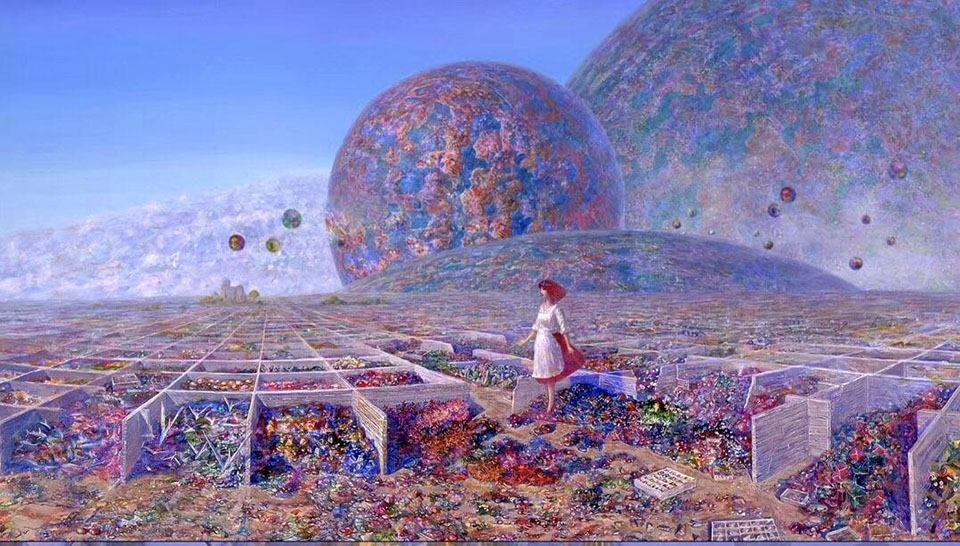

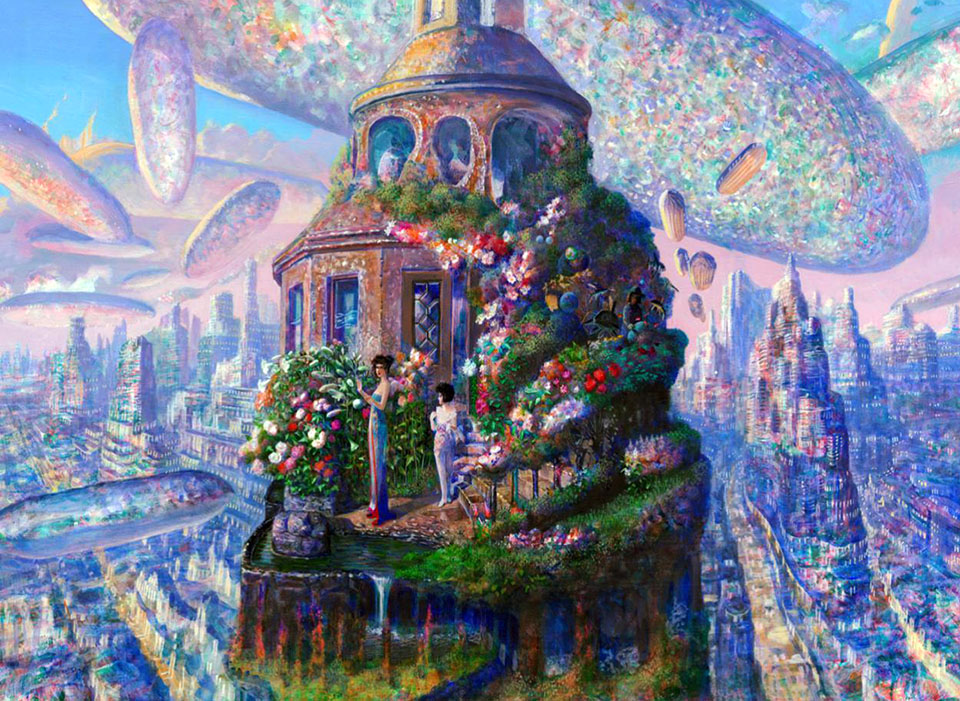

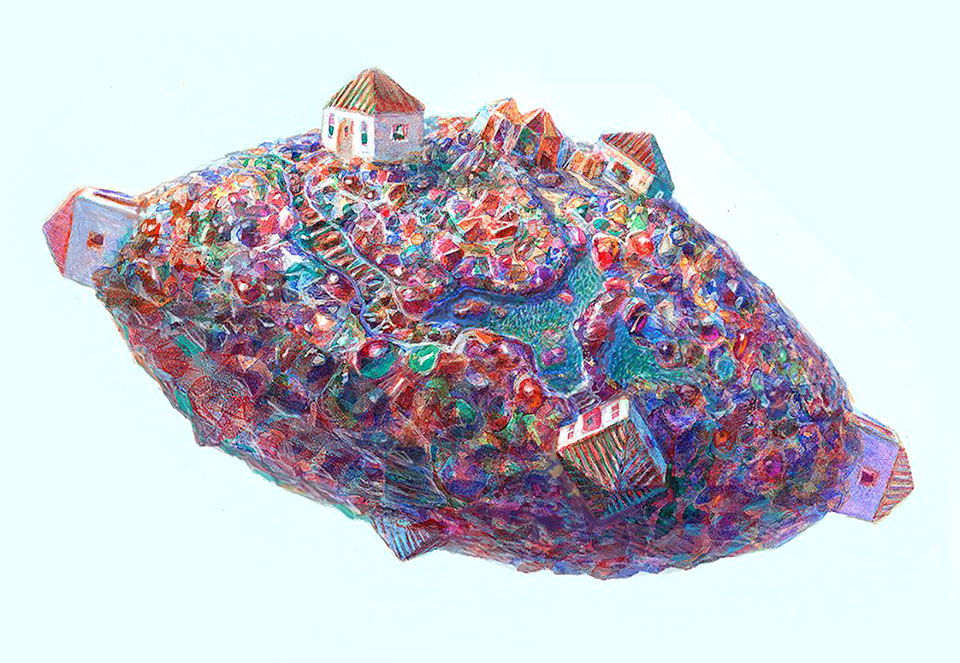

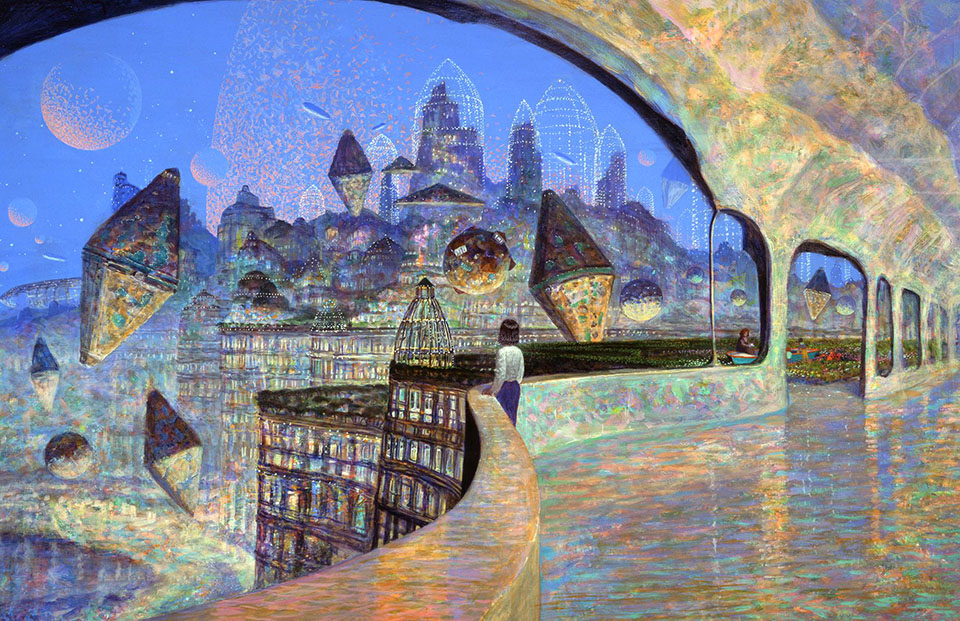

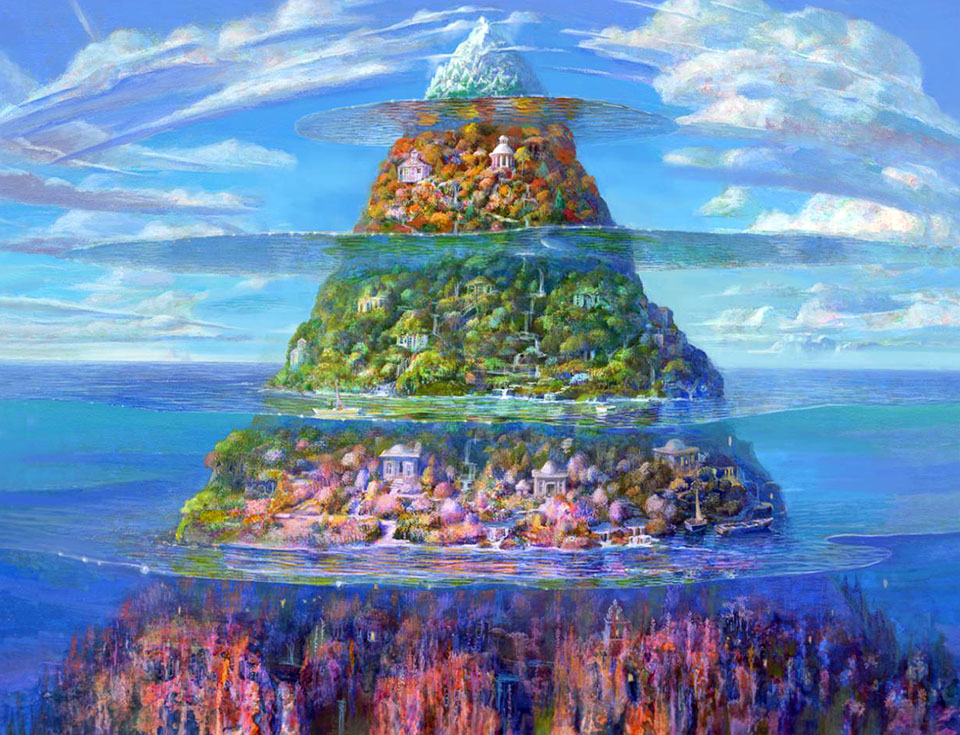

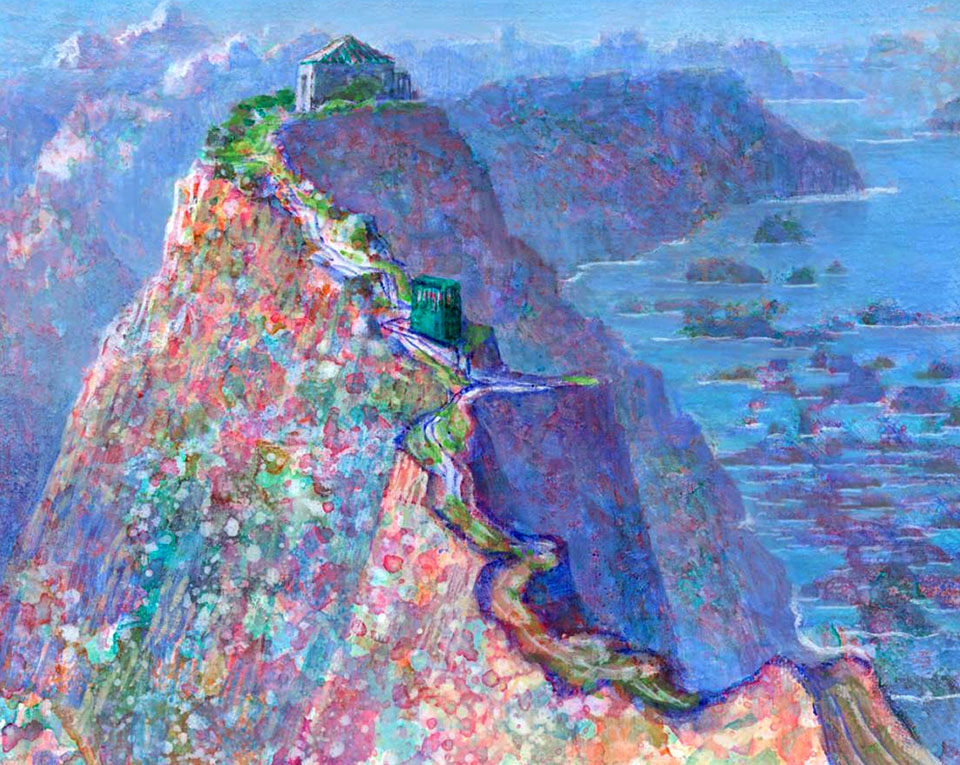

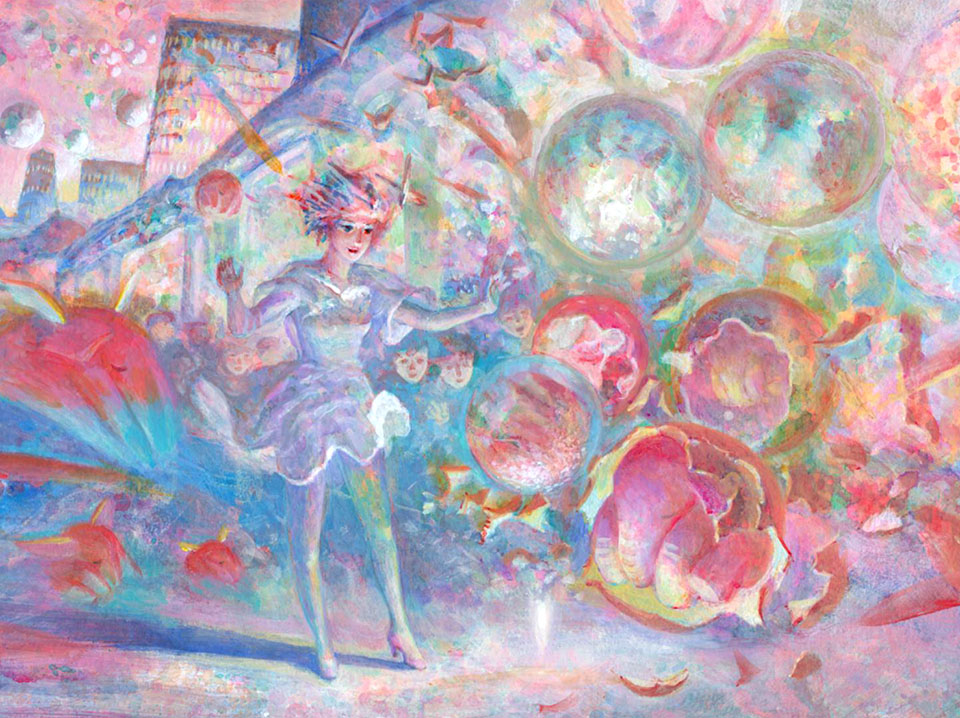

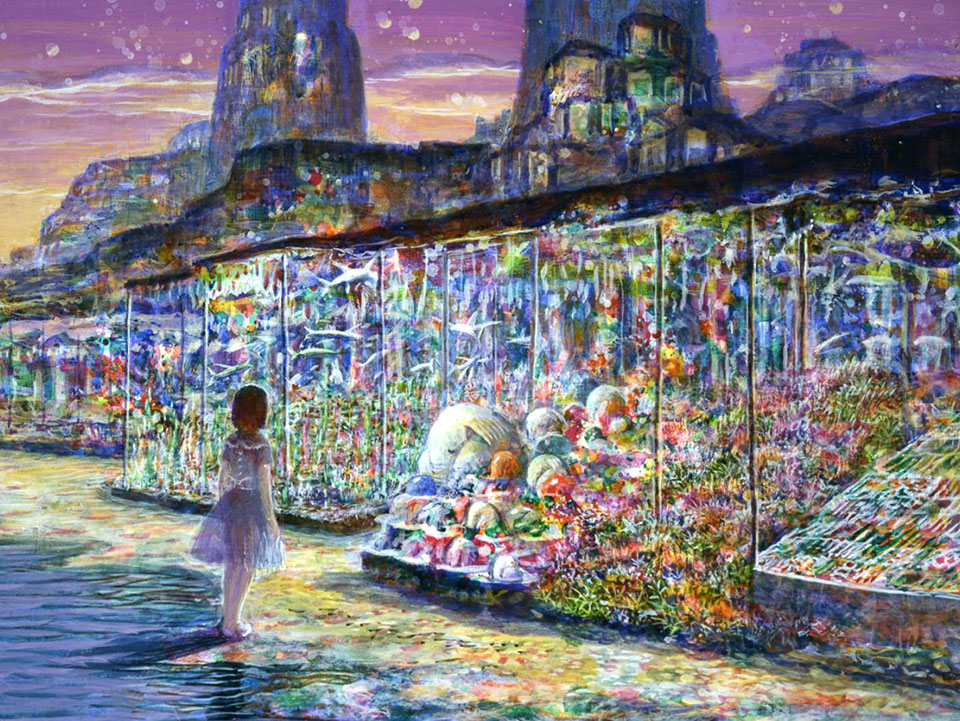



Comments